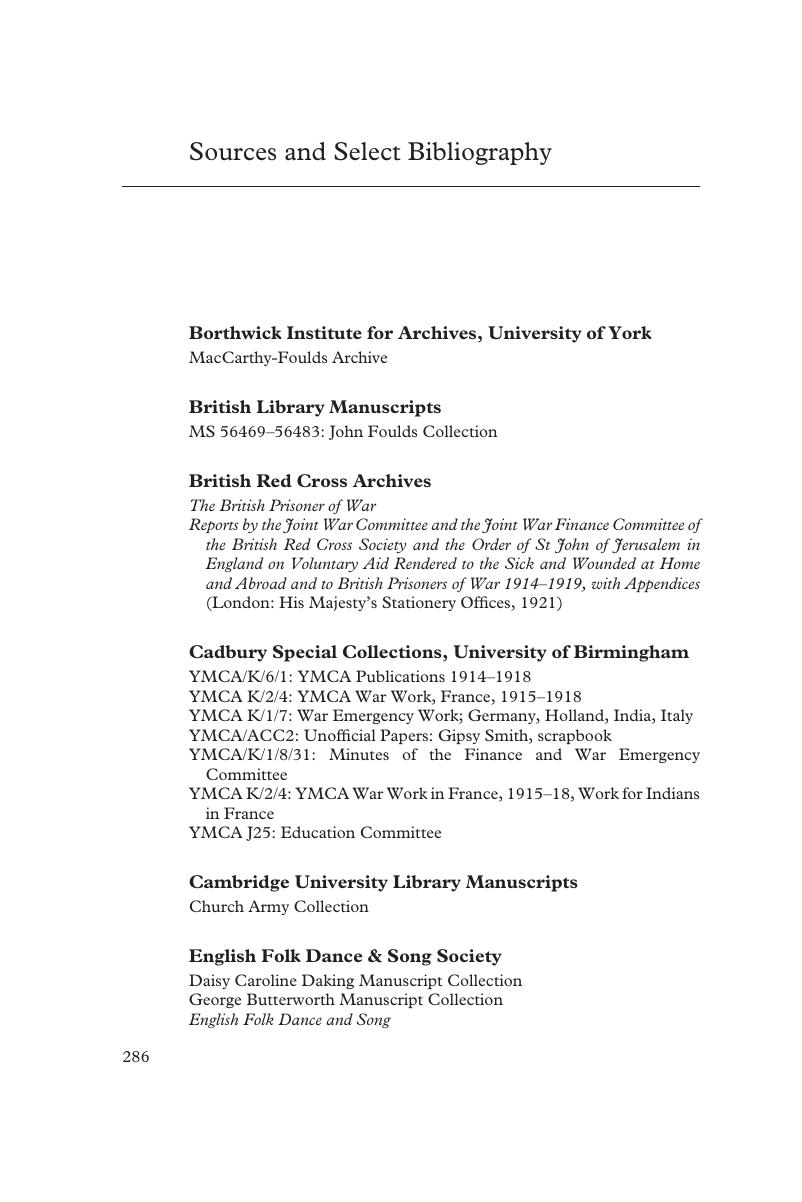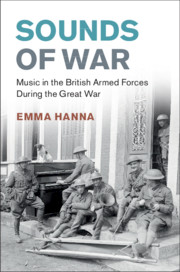Book contents
- Sounds of War
- Studies in the Social and Cultural History of Modern Warfare
- Sounds of War
- Copyright page
- Dedication
- Contents
- Figures
- Acknowledgements
- Abbreviations
- Introduction
- 1 Music in Britain, 1914
- 2 Recruitment and Fundraising
- 3 Instruments of War
- 4 Songs, Identity and Morale
- 5 Captivity
- 6 Religion and Pastoral Care
- 7 Medicine and Therapy
- 8 The Gramophone
- 9 Civilian Concert Parties
- 10 Servicemen’s Concert Parties
- 11 After the Armistice
- Conclusion
- Notes
- Sources and Select Bibliography
- Index
- References
Sources and Select Bibliography
Published online by Cambridge University Press: 20 February 2020
- Sounds of War
- Studies in the Social and Cultural History of Modern Warfare
- Sounds of War
- Copyright page
- Dedication
- Contents
- Figures
- Acknowledgements
- Abbreviations
- Introduction
- 1 Music in Britain, 1914
- 2 Recruitment and Fundraising
- 3 Instruments of War
- 4 Songs, Identity and Morale
- 5 Captivity
- 6 Religion and Pastoral Care
- 7 Medicine and Therapy
- 8 The Gramophone
- 9 Civilian Concert Parties
- 10 Servicemen’s Concert Parties
- 11 After the Armistice
- Conclusion
- Notes
- Sources and Select Bibliography
- Index
- References
Summary

- Type
- Chapter
- Information
- Sounds of WarMusic in the British Armed Forces during the Great War, pp. 286 - 298Publisher: Cambridge University PressPrint publication year: 2020



